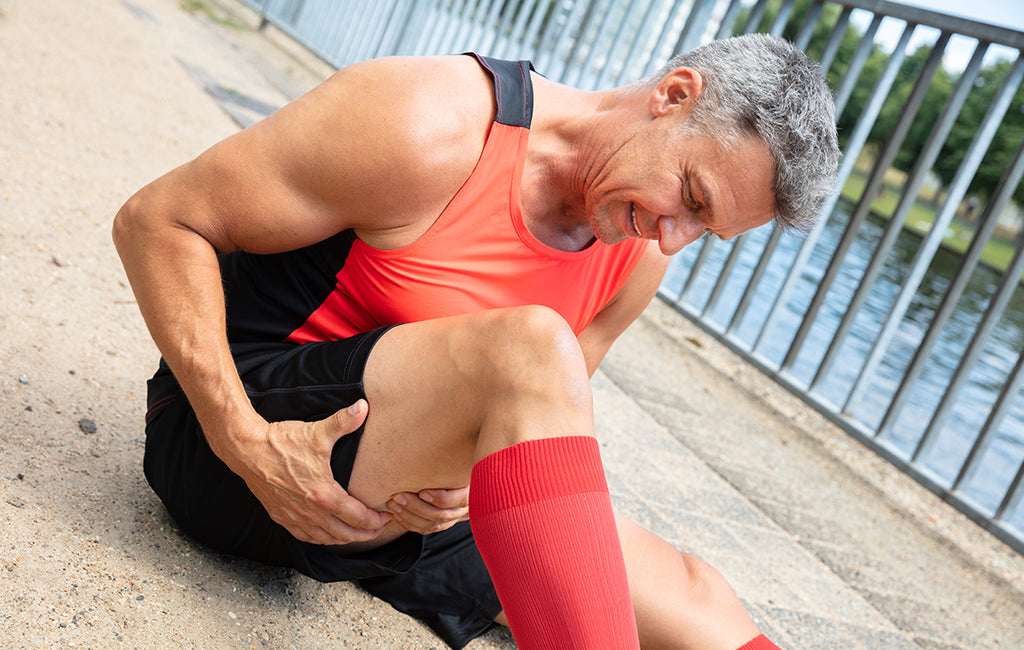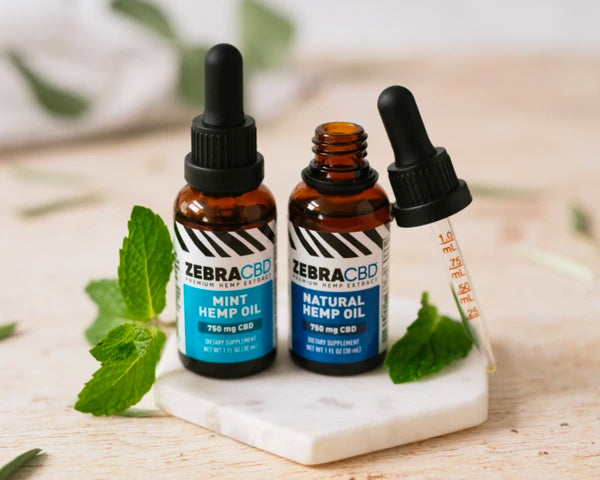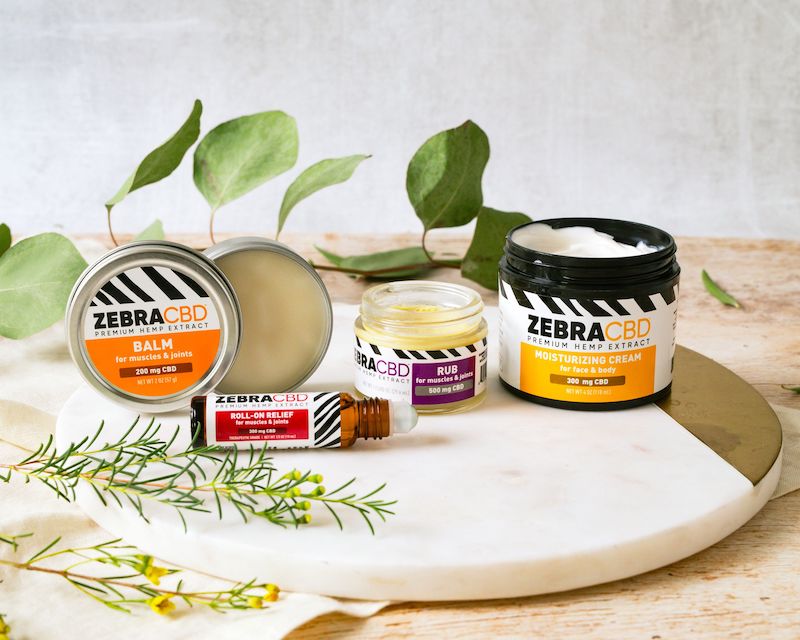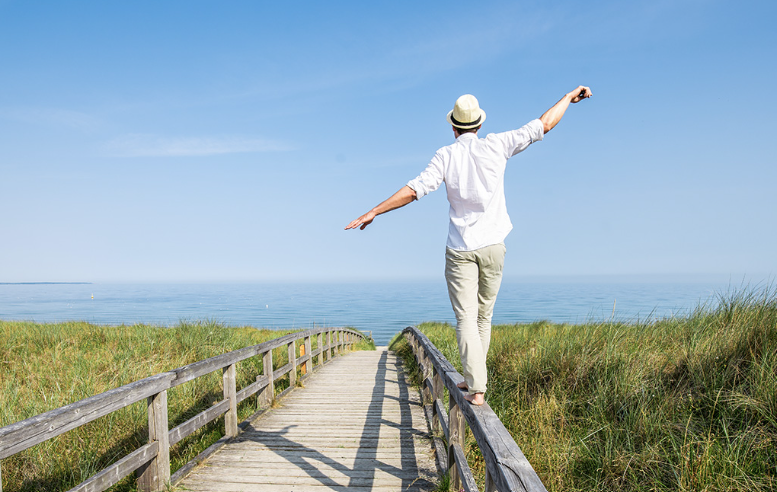
The moment your feet hit the pavement, the sound of your favorite workout playlist in your ears or the feeling of accomplishment when you prevail as the victor against an unrelenting hill is hard to beat.
Each of these things can take you to the very top of that “runner’s high.” But there’s nothing that’ll bring you back down to earth quite like sore hamstrings the day after.
Don’t let achy muscles stand between you and your workout routine. Instead, follow along as we outline all of the best ways to relieve sore hamstrings from running and how to take preventative action against them. Readers on your mark, get set, go!
CBD, or cannabidiol, is a chemical derived from the hemp plant and could be effective when it comes to soothing sore muscles.
Feeling sore in other parts of your body, too? Learn more about how to soothe back pain from running and a sore achilles from running.
Pinpoint The Problem Area
Before diving straight into a treatment plan, you’ll want to be sure you’re targeting the right muscle group. Running can sometimes be the cause of all sorts of uncomfortable aches and you wouldn’t want to make matters worse by focusing on the wrong area.
Your hamstrings are a group of three muscles that extend along the back of your thigh, from just below your buttocks down to the back of your knee. They’re responsible for flexing your knees as well as extending your hip in a backward motion — essentially, the very same motions needed to run.
If you’re experiencing hamstring tightness, it could also be accompanied by symptoms such as:
- Redness
- Swelling
- Bruising or discoloration
- Cramping
- Tenderness to the touch
If this sounds a bit like the discomfort you’re feeling, then you’re in the right place. Keep reading to learn a few tips on how to alleviate hamstring muscle soreness.
How to Soothe Sore Hamstrings
If you’re experiencing hamstring tightness, running is a potential cause. Oftentimes, sore hamstrings are accompanied by swelling, and they can even cause back, knee and foot discomfort. To that end, it’s important to equip yourself with an arsenal of soothing strategies to help relieve any lower body discomfort you may be experiencing.
#1 R.I.C.E.
No, not the grain used for making paella and risotto — although, these high-carb dishes would be an essential source of energy needed for long-distance runs. This RICE is the age-old acronym used as a general rule of thumb when treating things like muscle sprains and strains.
When it comes to soothing hamstring soreness, RICE is a key factor. Here’s a look at the playbook:
- Rest – For on-the-move athletes like you, this can sometimes be the hardest rule to adhere to. You might be itching to get back out on the road or trail, but taking even a day or two in between sessions to give your hamstrings time to cool off could help you get back — and stay back — on your feet.
- Ice – Icing your hamstrings for 10-20 minutes at a time is an effective way of keeping hamstring discomfort at bay. It can tackle any swelling you might be experiencing, too. Just be sure to wrap your ice pack in a thin cloth instead of applying it directly to your leg to avoid skin damage.
- Compression – Next, try wrapping the affected area with an athletic bandage to minimize swelling. Just be careful not to wrap it too tightly. Keep the area well-compressed without cutting off circulation.
- Elevation – Lay down with your ice pack and use a pillow to prop up your leg. The higher you can elevate your leg above your heart, the better. This will help to drain excess fluid in and around your hamstring to reduce swelling.
#2 Incorporate Cross-Training Activities
You should feel proud of the miles you’ve put in across several types of terrain over the years, but repeated use can put strain on your muscles and joints and could be the reason your hamstrings are acting up.
Physical therapist Trevor Hicks suggests incorporating some low-impact cross-training activities into your routine to help balance things out.
“Cross-training is valuable because it allows the athlete to continue training but decreases bone stress to help avoid injury,” Hicks says. “It also increases cardiovascular endurance while not taxing the joints as much as the forces incurred through running.”
In order to stay active and in shape without overworking your hamstrings, consider activities such as:
- Swimming/pool workouts
- Cycling
- Using the stair-climber or elliptical
- Nordic skiing
- Strength training
- Walking
#3 Stretch
A few well-targeted and carefully executed stretches could provide the relief you need for soreness and tight hamstrings. As you know, running should always start with some sort of pre- and post-workout stretching. The following routines are particularly helpful if your hamstrings could use some extra attention:
- Reclined hamstring stretch – For this stretch, lie on an exercise mat on your back and, while keeping one leg extended, elevate the other by grasping the back of your knee and guiding it toward your chest until you feel a comfortable stretch. To assist with this, you may choose to make use of a resistance band or a wall. Be sure to hold the stretch between 20-30 seconds.
- Seated hamstring stretch – Sit on the ground or an exercise mat, bringing the soles of your feet together into a butterfly position. Extend one of your legs, keeping your knee bent as needed and bend at the waist, reaching your arm out toward your ankle or foot. Hold for about 30 seconds and repeat on the other side.
- Standing hamstring stretch – While standing, extend one leg out in front of you, rest your heel on the ground and point your toes up toward the sky or ceiling. Bend at the waist, lean forward toward your toes while keeping a neutral spine and hold for 30 seconds. You may also do this stretch with the help of a table or surface that is just about the height of your thigh. Rest your heel upon it while keeping your toes flexed upward and hold for 30 seconds.
Doing a stretch before each run can help with muscle recovery to prevent a hamstring injury.
#4 Consider Massage Therapy
In some cases, making an appointment with a certified sports massage therapist can be helpful when recovering from sore hamstrings. This will be useful when it comes to stimulating blood flow in that area, loosening up tight muscles and fostering the production of healthy scar tissue (in the case of a hamstring strain or tear).
#5 Use a Foam Roller
If you’d prefer to try out a form of massage at home, try incorporating the use of a foam roller into your daily stretches. This cylindrical device can be purchased online or in most sports equipment stores and is often quite handy when it comes to improving flexibility and relieving tension from muscle soreness.
To use a foam roller on your hamstrings, sit on the floor or an exercise mat and place the roller under both of your hamstrings. Prop yourself into an upright position, using your hands for support behind you.
In a forward and backward motion, glide your hamstrings along the surface of the foam roller and continue to massage the area for about 30 seconds at a time.
#6 Try Using CBD
CBD, or cannabidiol, is a chemical derived from the hemp plant and could be effective when it comes to soothing sore muscles. You can find it in a variety of forms including topical creams, chewable gummies and ingestible tablets.
Rubs, in particular, could pair well with at-home massaging and stretching. Just apply a small, pea-sized amount to the affected area, massage it in until it’s fully absorbed and reapply as needed.
Stop Sore Hamstrings Before They Start
Now that you’re equipped with a few tricks to help relieve sore hamstrings from running, let’s take a closer look at what can be done to prevent it from setting you back in the first place:
- Loosen up before your run – You might be eager to take off from the starting gate but be sure to allow yourself plenty of time to loosen up your muscles before doing so — especially on a cold day. Combine static stretching with a few dynamic exercises, paying special attention to your hamstrings if they tend to be a problem area for you.
- Don’t overdo it if you notice something is off – You know your body better than anyone and if you notice that something doesn’t seem quite right, don’t ignore it. This doesn’t necessarily mean you’ll have to skip your workout entirely, but you might consider running a mile or two less than you had planned or jogging instead. Small aches can turn into much bigger problems down the road, if not paid the proper attention.
- Strengthen your hamstrings and the surrounding muscles – Find a strength-training routine that works for you and incorporate it into your regular routine. You’ll want to build up power in your hamstrings and in the surrounding muscle groups that support your hamstrings.
- Don’t skip your cool-down – Once you’re back from your run, it can be tempting to head straight to the refrigerator for a bottle of water or post-workout smoothie. Don’t forget to rehydrate, of course, but be sure to spend some time stretching your muscles even if they don’t feel tight in the moment to avoid potential running injuries.
Get Back on The Trails With Zebra CBD
Relieve tension in your tight hamstrings and put power back into your running routine with Zebra CBD. We know that athletes like you don’t like to be slowed down — so we’ve created an assortment of natural CBD gummies, roll-on oils and muscle rubs that can keep up.
Made from hemp that’s been organically grown in the USA and with a Label Accuracy Guarantee™, you can feel good knowing our products have been made responsibly and with the utmost care for your body.
Soothe sore hamstrings and lace back up with Zebra CBD.
Source:
Family Health Chiropractic. What to Know About Tight Hamstrings. https://www.familyhealthchiropractic.com/tight-hamstrings-symptoms-causes-treatment/
University of Michigan Health. Rest, Ice, Compression and Elevation (RICE). https://www.uofmhealth.org/health-library/tw4354spec
Advent Health. The Importance of Cross Training for Runners. https://www.adventhealth.com/hospital/adventhealth-orlando/blog/importance-cross-training-runners
Medical News Today. 7 best hamstring stretches. https://www.medicalnewstoday.com/articles/323703









